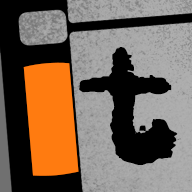Actually, I don't think your question really has anything to do with continuity. In regards to the shot sequence you have planned, all that matters (as far as continuity is concerned) is that your talent repeat the same dialogue and actions, performing it the same way every take.
Unless you've got a seasoned cast, one that is experienced with, and good at keeping their actions constant though different takes, I would recommend including a couple close-ups in your coverage. You might end up not using these closeups, and perhaps you don't want to, but they sort of function as a continuity insurance plan. You might want to cut from one shot to the next, but the problem is that in the first shot, your actor had his hand on his waist, and then in the second shot, his opposite was on his opposite waist. Well, with a closeup at your disposal, you can cut away to just his face, making the disconinuity of his hand-on-waist moot.
As far as your actual question is concerned, the only thing I'm concerned about is that I worry you might be crossing the line of action. I'm not really in the mood for explaining the 180 degree rule, cuz you can google it. Anyway, if you're worried about crossing the line of action, you can throw in some "neutral" shots -- in fact, a head-on closeup is a neutral shot, then you can cut to either side of the line of action.



